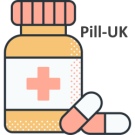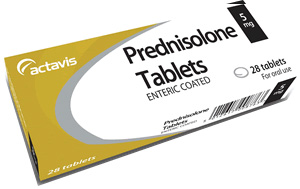Allergy? Inflammation of the eyeballs? Dermatitis? Asthma? Multiple sclerosis? What, it seems, could these diagnoses have in common?
The answer is simple: Prednisolone!
Prednisolone is an effective broad-spectrum steroid drug that has long been established on the British market with anti-inflammatory, anti-allergic, anti-shock and anti-pruritic effects.
Below you will find answers to the main questions about the drug. It is best to buy Prednisolone from our online pharmacy. We distinguish ourselves by having only official and quality products, as well as the best price. Moreover, you can order the drug without a prescription. All you have to do is fill out a form and the medicine will be delivered to you within a few days anywhere in the country.
What Is Prednisolone And Why Is It Used?
The drug has a broad spectrum of action. Prednisolone is your best friend in the fight against acute and chronic allergic diseases, your superman in the fight against dermatitis or rheumatism, your faithful companion in the treatment of hepatitis, colitis or tuberculosis.
Indications for Prednisolone Use
The drug is indicated in cases such as:
- Burns, trauma, transfusions, infectious toxic shock;
- primary or secondary adrenal insufficiency, including acute adrenal failure
- non-pulmonary thyroiditis
- rheumatoid arthritis and systemic lupus erythematosus;
- erythema multiforme multiforme gravis
- exfoliative dermatitis;
- idiopathic thrombocytopenic purpura; acute and chronic leukaemia;
- Severe allergic diseases resistant to adequate antihistamine treatment: contact and atopic dermatitis, serum sickness, drug allergy, transfusion reactions, status asthmaticus, acute laryngeal oedema of non-infectious aetiology;
- Allergic reactions, including anaphylaxis, laryngitis, laryngotracheitis, severe bronchial asthma, status asthmaticus; – Multiple sclerosis;
- infectious-toxic shock (with concurrent antibiotic therapy);
- autoimmune diseases (acute glomerulonephritis);
- non-specific ulcerative colitis, Crohn’s disease, localised enteritis;
- hepatitis;
- for inhibition of transplant rejection reactions.
Contraindications To The Use Of Prednisolone
- Hypersensitivity to prednisolone or to any of the excipients of the medicinal product;
- lactase deficiency, lactose intolerance;
- systemic fungal infections;
- gastric and duodenal ulcers;
- systemic osteoporosis;
- Cushing’s syndrome;
- renal failure;
- chicken pox; herpes simplex; vaccination period;
- active tuberculosis;
- pregnancy;
- lactation period.
Possible Side Effects
Prolonged use of the drug can cause loss of bone mass and so-called steroid osteoporosis (thinning of bone tissue), leading to bone fractures.
Adverse reactions are also possible: Bad taste in the mouth, dyspepsia, oesophageal candidiasis, nausea, vomiting, diarrhoea, pancreatitis, gastric and duodenal ulcers due to corticosteroids, bleeding and perforation of the gastrointestinal tract, increased or decreased appetite, flatulence, hiccups, impaired glucose tolerance, steroid diabetes mellitus or manifestation of latent diabetes mellitus, irritability, sleep disturbances, suicidal tendencies, increased concentration, dementia, psychosis, convulsions, pruritus, urticaria, Quincke’s oedema, headache, dizziness, anaphylactic shock.
If these side effects occur, you should stop taking the medicine and seek emergency treatment or contact your doctor.
Dosage and Administration
The dosage of the medicine should be decided by the doctor on an individual basis.
The tablet should be taken orally without chewing and with plenty of water. Most (2/3) or all of the dose should be taken in the morning at around 8 a.m. and 1/3 in the evening.
In adults: in acute states and as therapy, the drug is prescribed at a dose of 20-30 mg daily with a gradual transition to a maintenance dose of 5-10 mg. If necessary, the starting dose may be 15-100 mg daily and the maintenance dose 5-15 mg daily.
In children: the starting dose for children is 1-2 mg per kg bodyweight per day, spread over 4-6 doses, and the maintenance dose is 300-600 mcg per kg bodyweight per day.
Treatment is stopped slowly and the dose is gradually reduced to avoid withdrawal syndrome.


